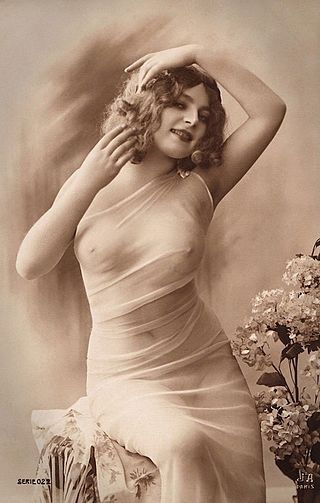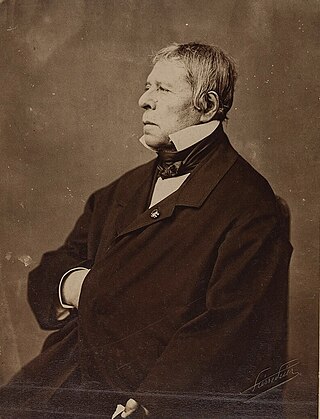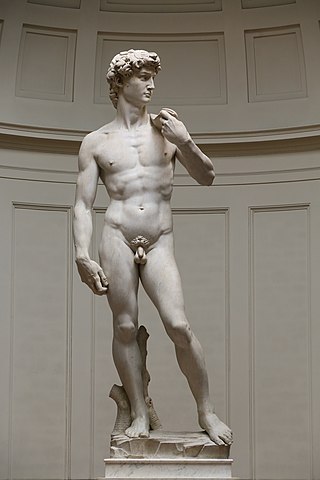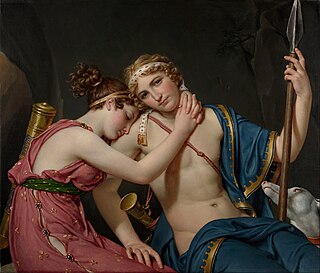
Jealousy in art deals with the way in which writers, musicians and graphic artists have approached the topic of jealousy in their works.

Jealousy in art deals with the way in which writers, musicians and graphic artists have approached the topic of jealousy in their works.
Literary works use a variety of devices to explore its possibilities and reveal its wider implications. Most famously, perhaps, Schahriar's destructive jealousy in One Thousand and One Nights is what precipitates Scheherazade's creative outpouring of stories. In Ariosto’s Orlando furioso (1516) jealousy leads to such a distortion of the world that the sufferer is driven to madness. Shakespeare's later play, The Winter's Tale (1613) is predominantly about the jealousy felt by Leontes' and his supposed adulterous wife.
E. T. A. Hoffmann’s Princess Brambilla (1821) is more concerned with the interplay between jealousy and the theater, between reality and masks. In Charlotte Brontë’s Villette (1853) jealousy becomes a game of reflections and speculations, a potent denial of sexual stereotypes, and, like many novels written by women, an angry rejection of the violation of the individual caused by the gaze of the jealous lover. Anthony Trollope uses both He Knew He Was Right (1869) and Kept in the Dark (1882) to analyze not only double standards used to judge how men and women behave but also the relationship between mind and body. Tolstoy’s The Kreutzer Sonata (1889) offers a compelling exploration of jealousy acting as a front for repressed homosexuality. Proust’s In Search of Lost Time (1913–1927), especially the section concerning Albertine, represents the claustrophobic nature of the passion of jealousy through the tropes of imprisonment, illness and death, while Michal Choromanski’s Jealousy and Medicine (1932) creates a landscape and a climate that recreate to the full the physical experience of jealousy. Freud’s reading of jealousy and his emphasis on repetitive structures inspires Iris Murdoch’s A Word Child (1975) in which the London subway symbolizes endless repetition of the same.
Other novelists have used jealousy to explore the relationship between writer and reader, as well as that between fiction and reality. Alain Robbe-Grillet’s Jealousy (1965) develops the image of the window blind (in French “la jalousie” means both the emotion and the window blind) to lock the reader into the jealous person's mind, while in Julian Barnes’s Talking it Over (1991), the writer’s jealousy of the reader’s attention is as much a part of the story as the sexual jealousy it also examines. A. S. Byatt’s Possession (1990) is in part an analysis of the ways in which writing and reading operate to silence other voices.
The topic also comes up in Isaac Disraeli's writing as a literary tool. [1]

In art, depicting a face reflecting the ravages of jealousy was a frequent studio exercise: see for instance drawings by Charles Le Brun (1619–1690) or Sébastien Leclerc the Younger , or in a fuller treatment, the howling figure on the left in Bronzino’s An Allegory with Venus and Cupid (probably 1540-50). Albrecht Dürer’s 1498 drawing, Hercules’s Jealousy depicts jealousy as a powerfully built woman armed with a sword. [2] The theme of jealousy is frequently conveyed through images of the gaze as in Jean-Auguste-Dominique Ingres’s Paolo and Francesca (1819) which reveals the jealous husband’s gaze catching the young lovers’ first kiss. [3]
Edvard Munch’s many depictions of jealousy, however, tend to place the husband at the front of the painting with a couple behind him as if to suggest that jealousy is created more by the mind than by the gaze. This suggestion is intensified by his use of symbolic colors. [4] There are, nevertheless, lighter moments, as when Gaston La Touche (1854–1913), in Jealousy or the Monkey shows a love scene interrupted by a monkey tugging on the woman's dress. [5] While popular images of jealousy tend to the lurid, it remains a source, both in literature and in painting, of highly creative artistic strategies that have little to do with the negative and destructive sides of the emotion itself.
On a larger scale, this was also prevalent as Italian cities competed with one another for prestige as an art destination. [6]

Erotica is literature or art that deals substantively with subject matter that is erotic, sexually stimulating or sexually arousing. Some critics regard pornography as a type of erotica, but many consider it to be different. Erotic art may use any artistic form to depict erotic content, including painting, sculpture, drama, film or music. Erotic literature and erotic photography have become genres in their own right. Erotica also exists in a number of subgenres including gay, lesbian, women's, bondage, monster and tentacle erotica.

Edvard Munch was a Norwegian painter. His 1893 work The Scream has become one of Western art's most acclaimed images.

Jean-Auguste-Dominique Ingres was a French Neoclassical painter. Ingres was profoundly influenced by past artistic traditions and aspired to become the guardian of academic orthodoxy against the ascendant Romantic style. Although he considered himself a painter of history in the tradition of Nicolas Poussin and Jacques-Louis David, it is his portraits, both painted and drawn, that are recognized as his greatest legacy. His expressive distortions of form and space made him an important precursor of modern art, influencing Picasso, Matisse and other modernists.

Jealousy generally refers to the thoughts or feelings of insecurity, fear, and concern over a relative lack of possessions or safety.
Pathological jealousy, also known as morbid jealousy, Othello syndrome, or delusional jealousy, is a psychological disorder in which a person is preoccupied with the thought that their spouse or romantic partner is being unfaithful without having any real or legitimate proof, along with socially unacceptable or abnormal behaviour related to these thoughts. The most common cited forms of psychopathology in morbid jealousy are delusions and obsessions. It is considered a subtype of delusional disorder.

Olympia is a 1863 oil painting by Édouard Manet, depicting a nude white woman ("Olympia") lying on a bed being attended to by a black maid. The French government acquired the painting in 1890 after a public subscription organized by Claude Monet. The painting is now in the Musée d'Orsay, Paris.
Jealousy in religion examines how the scriptures and teachings of various religions deal with the topic of jealousy.

The nude, as a form of visual art that focuses on the unclothed human figure, is an enduring tradition in Western art. It was a preoccupation of Ancient Greek art, and after a semi-dormant period in the Middle Ages returned to a central position with the Renaissance. Unclothed figures often also play a part in other types of art, such as history painting, including allegorical and religious art, portraiture, or the decorative arts. From prehistory to the earliest civilizations, nude female figures were generally understood to be symbols of fertility or well-being.

Grande Odalisque, also known as Une Odalisque or La Grande Odalisque, is an oil painting of 1814 by Jean-Auguste-Dominique Ingres depicting an odalisque, or concubine. Ingres' contemporaries considered the work to signify Ingres' break from Neoclassicism, indicating a shift toward exotic Romanticism.

In critical theory, philosophy, sociology, and psychoanalysis, the gaze, in the figurative sense, is an individual's awareness and perception of other individuals, other groups, or oneself. The concept and the social applications of the gaze have been defined and explained by existentialist and phenomenologist philosophers. Jean-Paul Sartre described the gaze in Being and Nothingness (1943). Michel Foucault, in Discipline and Punish: The Birth of the Prison (1975), developed the concept of the gaze to illustrate the dynamics of socio-political power relations and the social dynamics of society's mechanisms of discipline. Jacques Derrida, in The Animal That Therefore I Am (1997), elaborated upon the inter-species relations that exist among human beings and other animals, which are established by way of the gaze.

Napoleon I on his Imperial Throne is an 1806 portrait of Napoleon I of France in his coronation costume, painted by the French painter Jean-Auguste-Dominique Ingres.

Portrait of Monsieur Bertin is an 1832 oil on canvas painting by Jean-Auguste-Dominique Ingres. It depicts Louis-François Bertin (1766–1841), the French writer, art collector and director of the pro-royalist Journal des débats. Ingres completed the portrait during his first period of success; having achieved acclaim as a history painter, he accepted portrait commissions with reluctance, regarding them as a distraction from more important work. Bertin was Ingres' friend and a politically active member of the French upper-middle class. Ingres presents him as a personification of the commercially minded leaders of the liberal reign of Louis Philippe I. He is physically imposing and self-assured, but his real-life personality shines through – warm, wry and engaging to those who had earned his trust.

The Turkish Bath is an oil painting by Jean-Auguste-Dominique Ingres, initially completed between 1852 and 1859, but modified in 1862. The painting depicts a group of nude women at a pool in a harem. It has an erotic style that evokes both the Near East and earlier western styles associated with mythological subject matter. The painting expands on a number of motifs that Ingres had explored in earlier paintings, in particular The Valpinçon Bather (1808) and La Grande odalisque (1814) and is an example of Romanticism.
Relational transgressions occur when people violate implicit or explicit relational rules. These transgressions include a wide variety of behaviors. The boundaries of relational transgressions are permeable. Betrayal for example, is often used as a synonym for a relational transgression. In some instances, betrayal can be defined as a rule violation that is traumatic to a relationship, and in other instances as destructive conflict or reference to infidelity.

The Blue Room is a 1923 painting by French artist Suzanne Valadon. One of her most recognizable works, it has been called a radical subversion of representation of women in art. Like many of Valadon's later works, it uses strong colors and emphasizes decorative backgrounds and patterned materials. Valadon depicts a modern 20th-century woman, clothed and smoking a cigarette, in a pose traditional to female nudes, particularly 19th-century images of odalisques and prostitutes, such as Edouard Manet's Olympia.

Raphael and La Fornarina is an oil painting on canvas executed in 1813, in Italy, by Jean-Auguste-Dominique Ingres. It is the first of five versions of the painting he produced between 1813 and his death in 1867. In 1814 his first version was exhibited at the Salon. The work shows the renowned painter, Raphael, sitting in his studio with his mistress, La Fornarina, on his knee. His embrace reflects his affection and desire for her, while his gaze towards his own artwork, his portrait of his mistress, indicates his love for art. This contrast represents the painter's major conflict between who he loves and what he loves. The mistress makes eye contact with the viewer and her posture, specifically her arms resting on his shoulders, shows how proud and satisfied she is with being his mistress and inspiration. The Fornarina's sensual gaze at the viewer claims her importance and place both within the artist's studio and profession.

The Farewell of Telemachus and Eucharis is a painting from 1818 by Jacques-Louis David, now in the J. Paul Getty Museum in Los Angeles, California. Painted during David's exile in Brussels, it was purchased by the Count von Schönborn-Wiesentheid. It depicts Telemachus and Eucharis, two characters in François Fénelon's 1699 novel Les Aventures de Télémaque, inspired by Homer's Odyssey. The artist's last painting of a couple from mythology, it is a pendant painting to his Love and Psyche.
Blinding Light is a 2005 novel by Paul Theroux.

The Dream of Ossian is an 1813 painting by the French artist Jean-Auguste-Dominique Ingres. The work depicts the legendary poet Ossian sleeping while he dreams of relatives, warriors and deities, which appear above him on the canvas. Ingres was influenced by his contemporaries' Ossianic works, including James Macpherson's purported translations of Ossian's poems, François Gérard's 1801 painting Ossian Evoking Phantoms, and Jean-François Le Sueur's 1803 opera Ossian, ou Les bardes.

Salome by Oscar Wilde, a play written in 1891 and first produced in 1896, has been analysed by numerous literary critics, and has prompted numerous derivatives. The play depicts the events leading to the execution of Iokanaan at the instigation of Salome, step-daughter of Herod Antipas, and her death on Herod's orders.